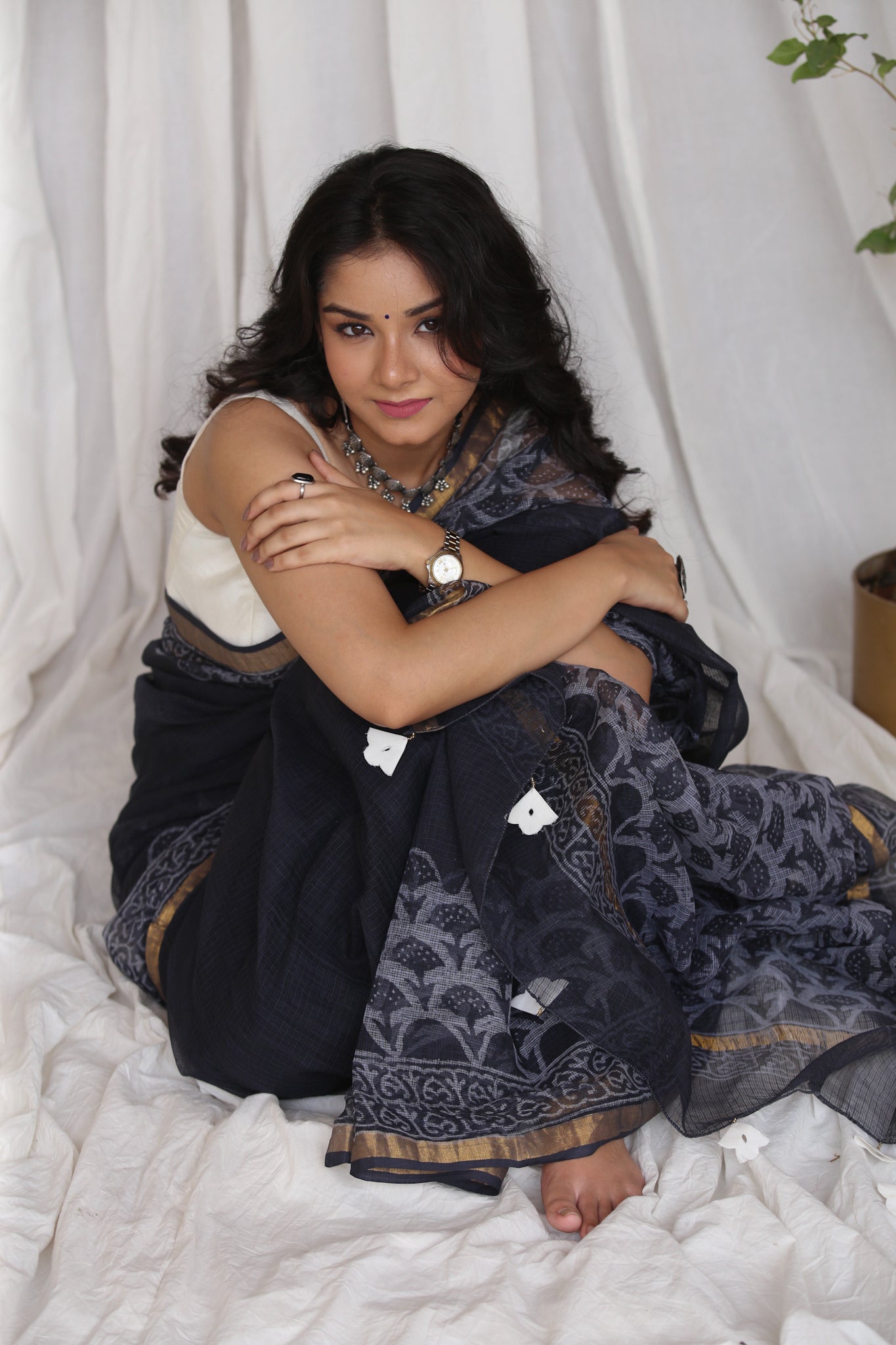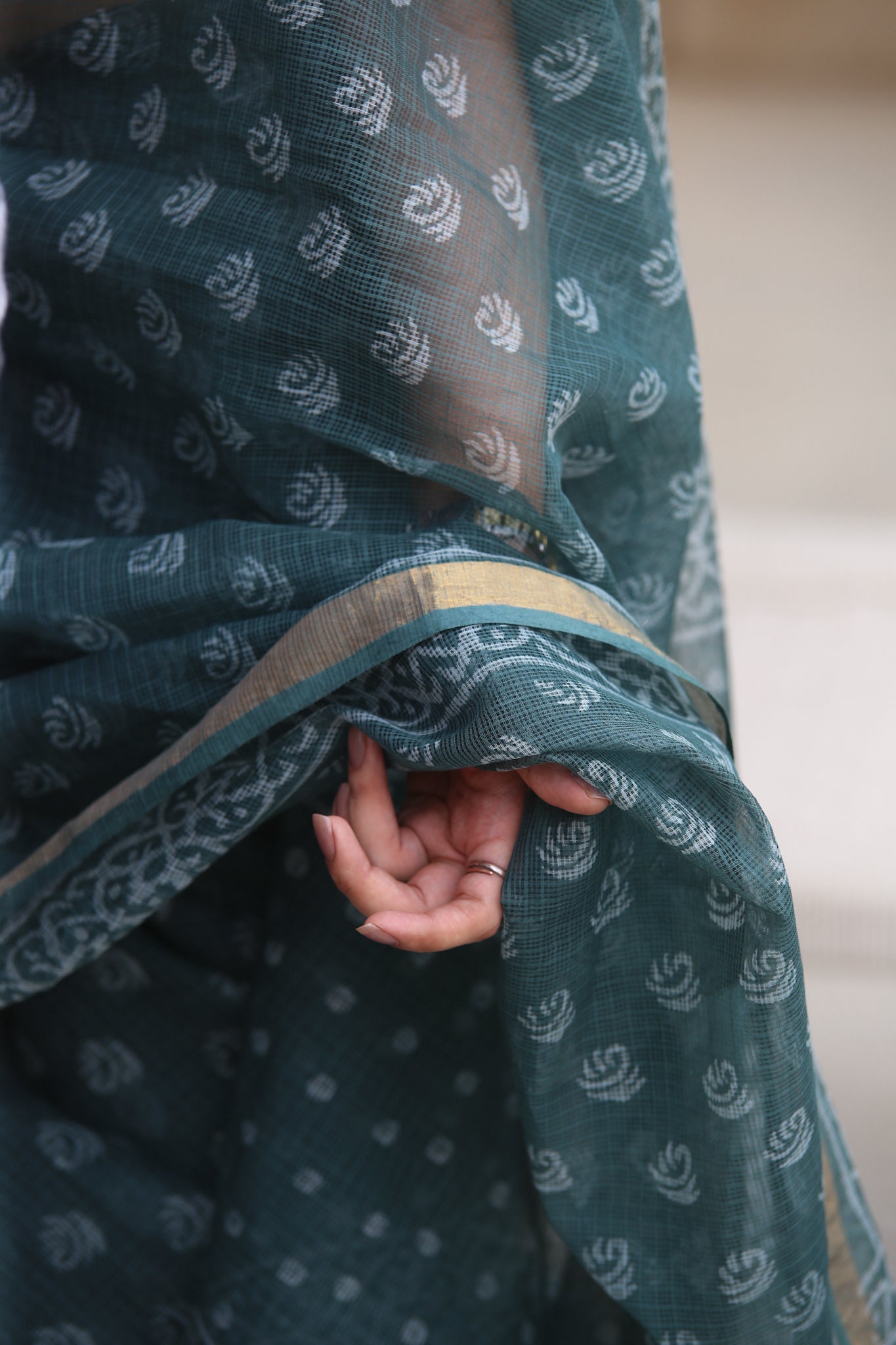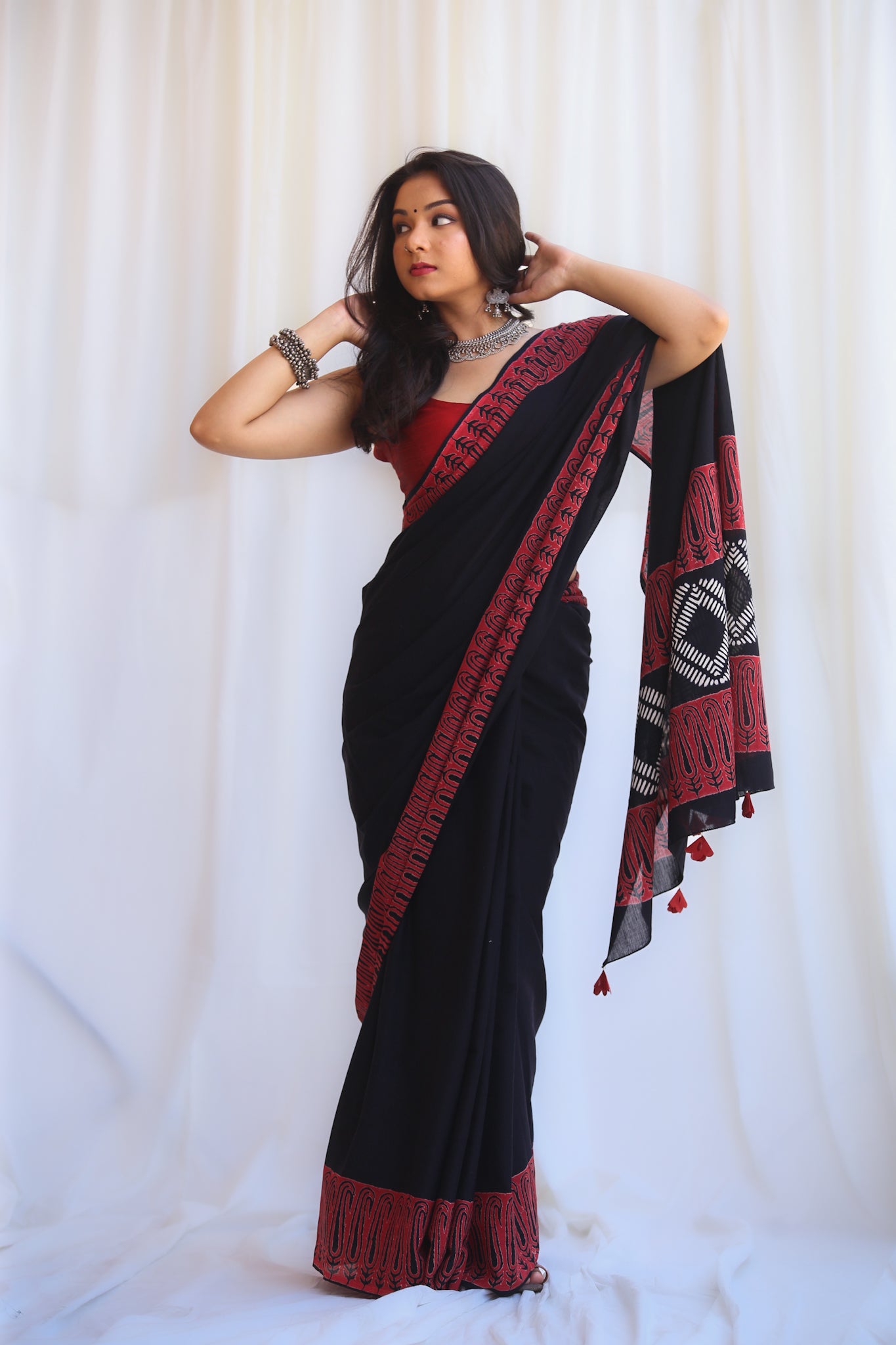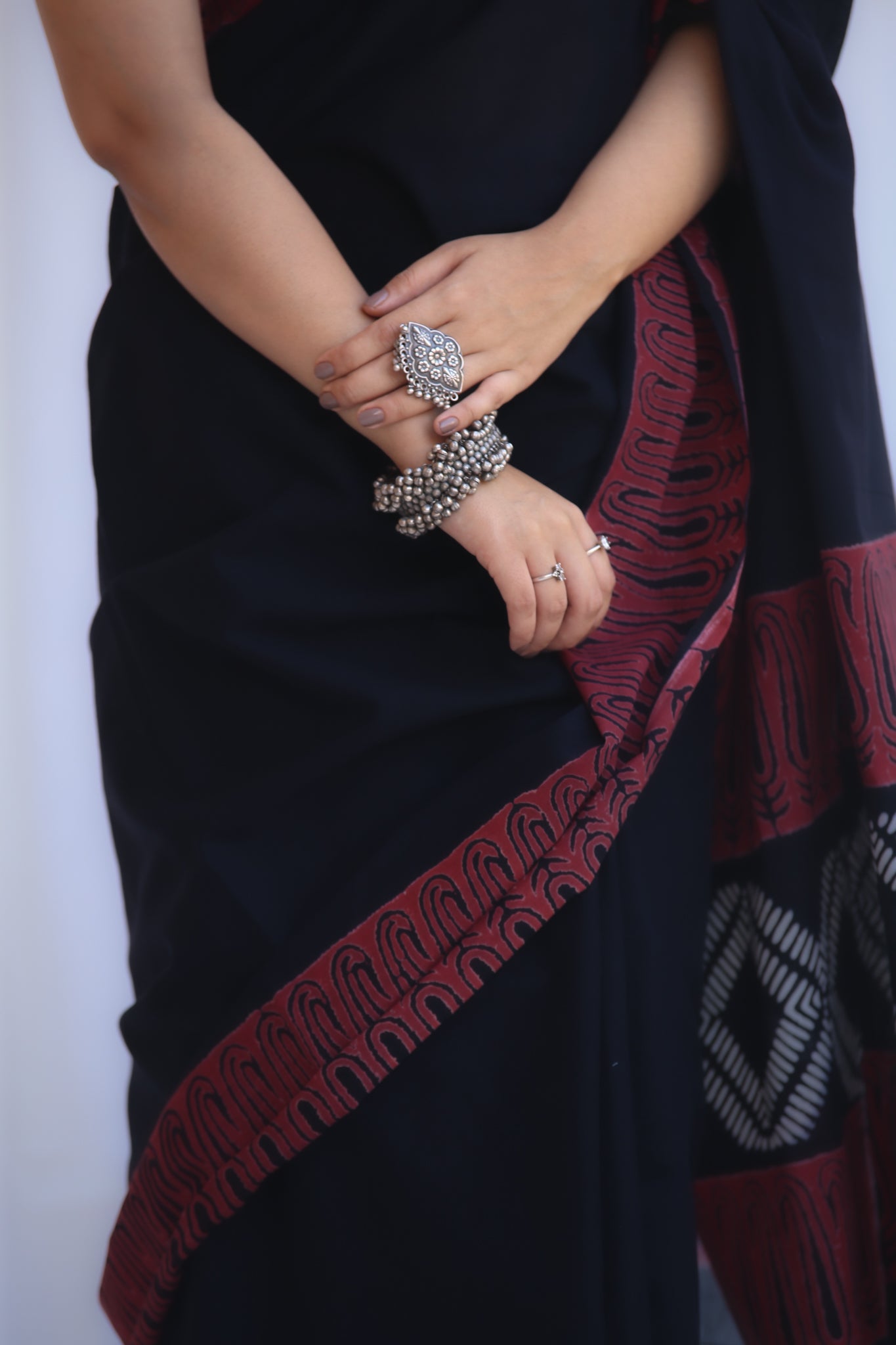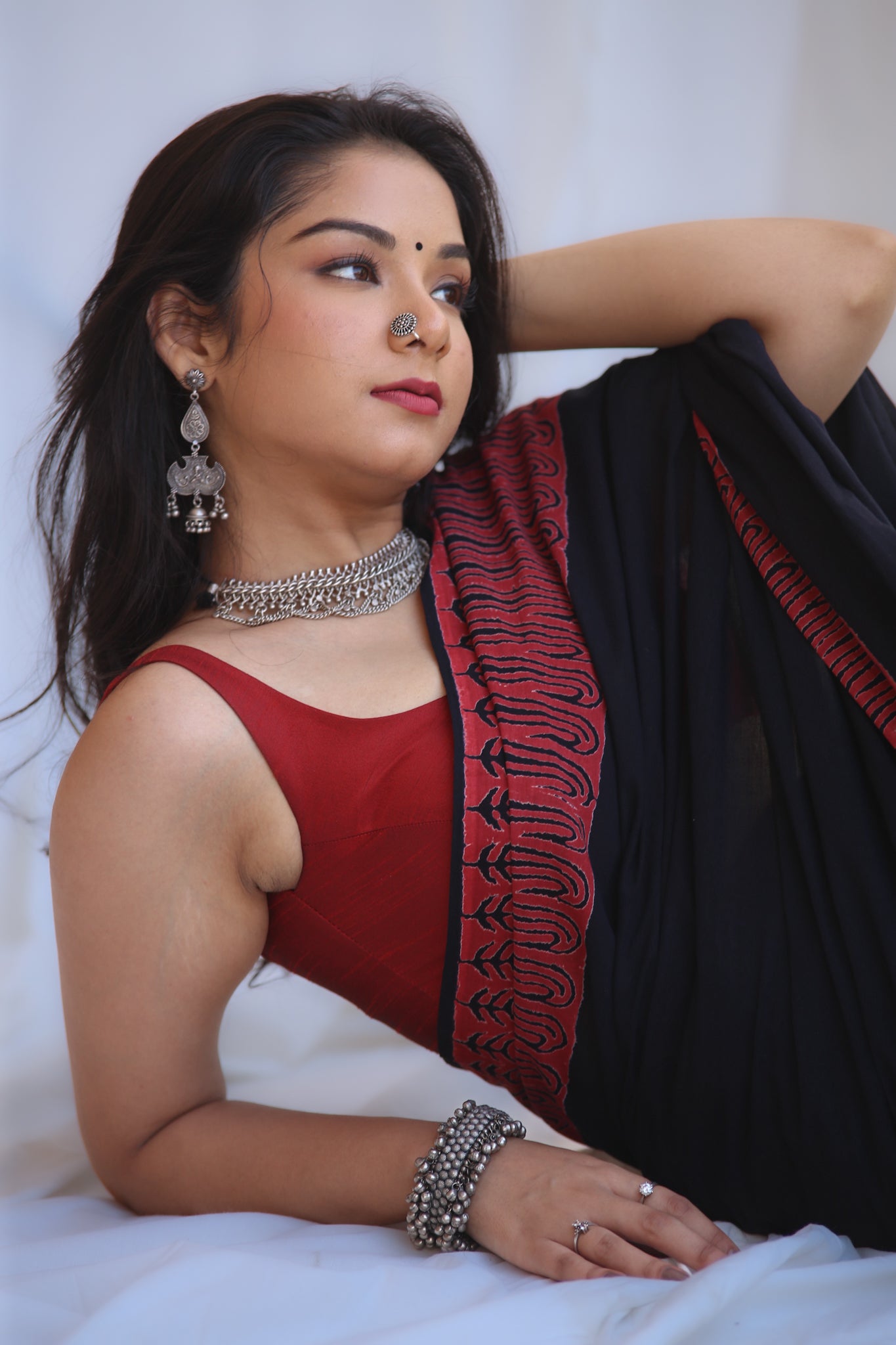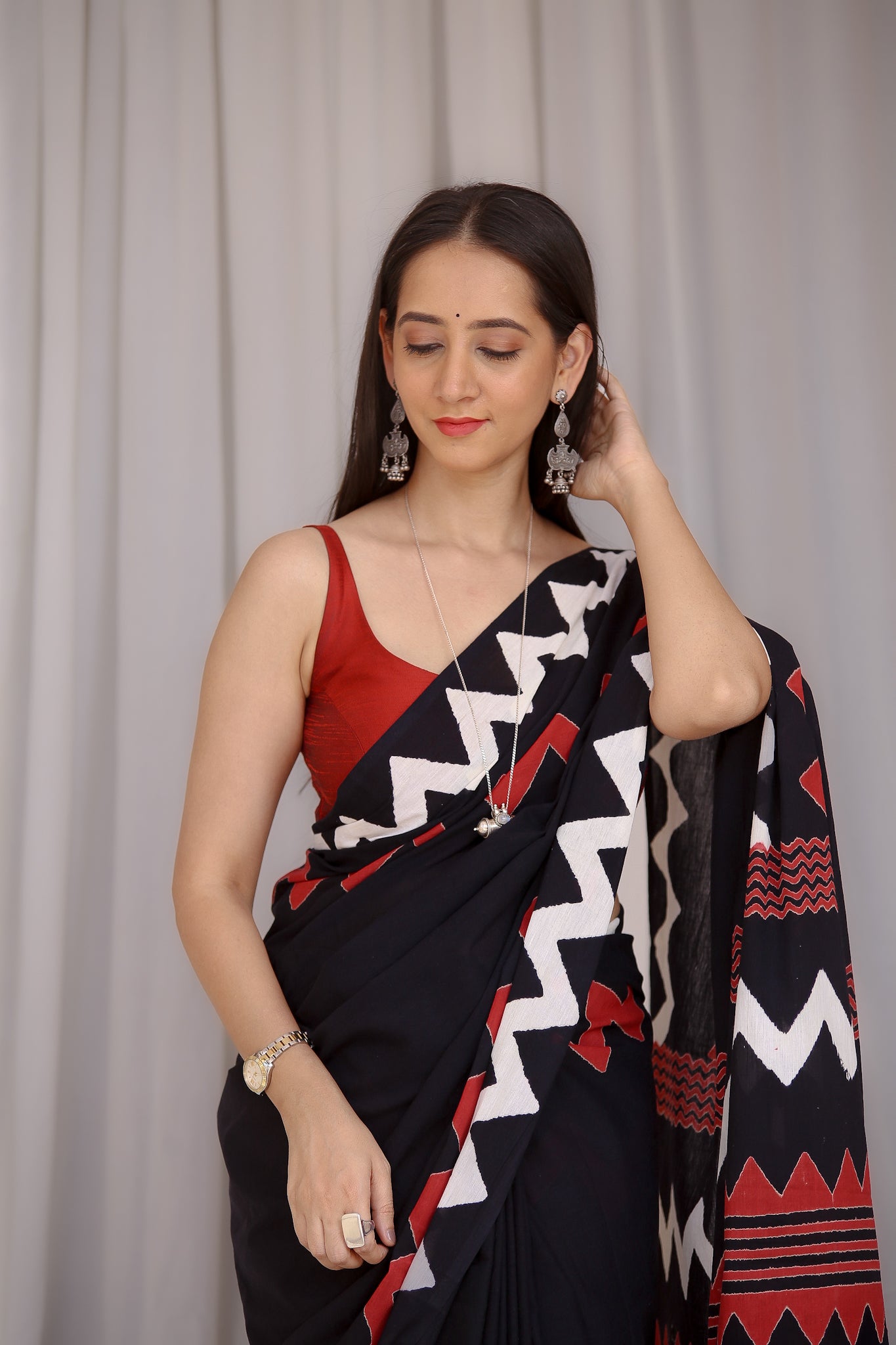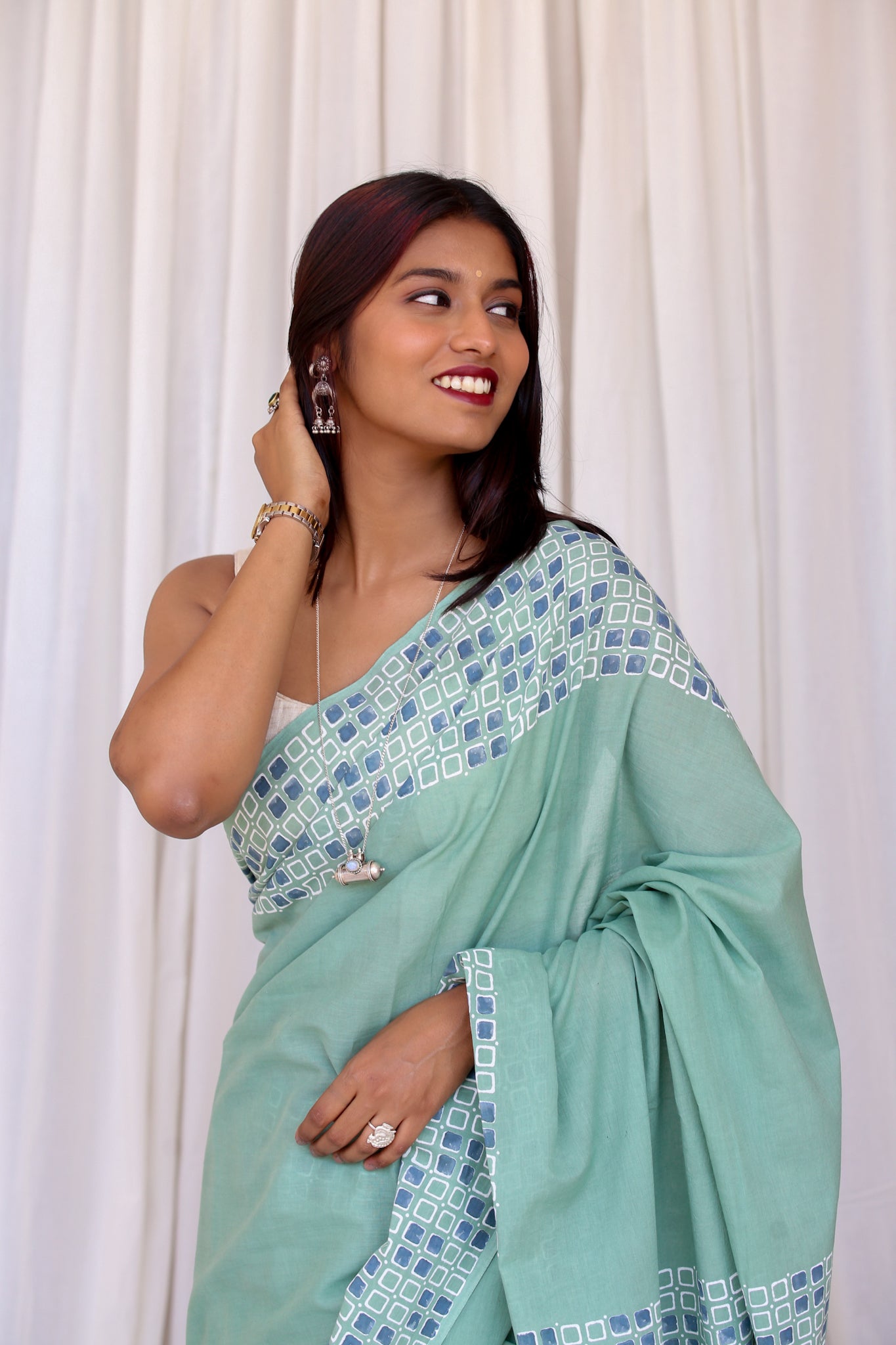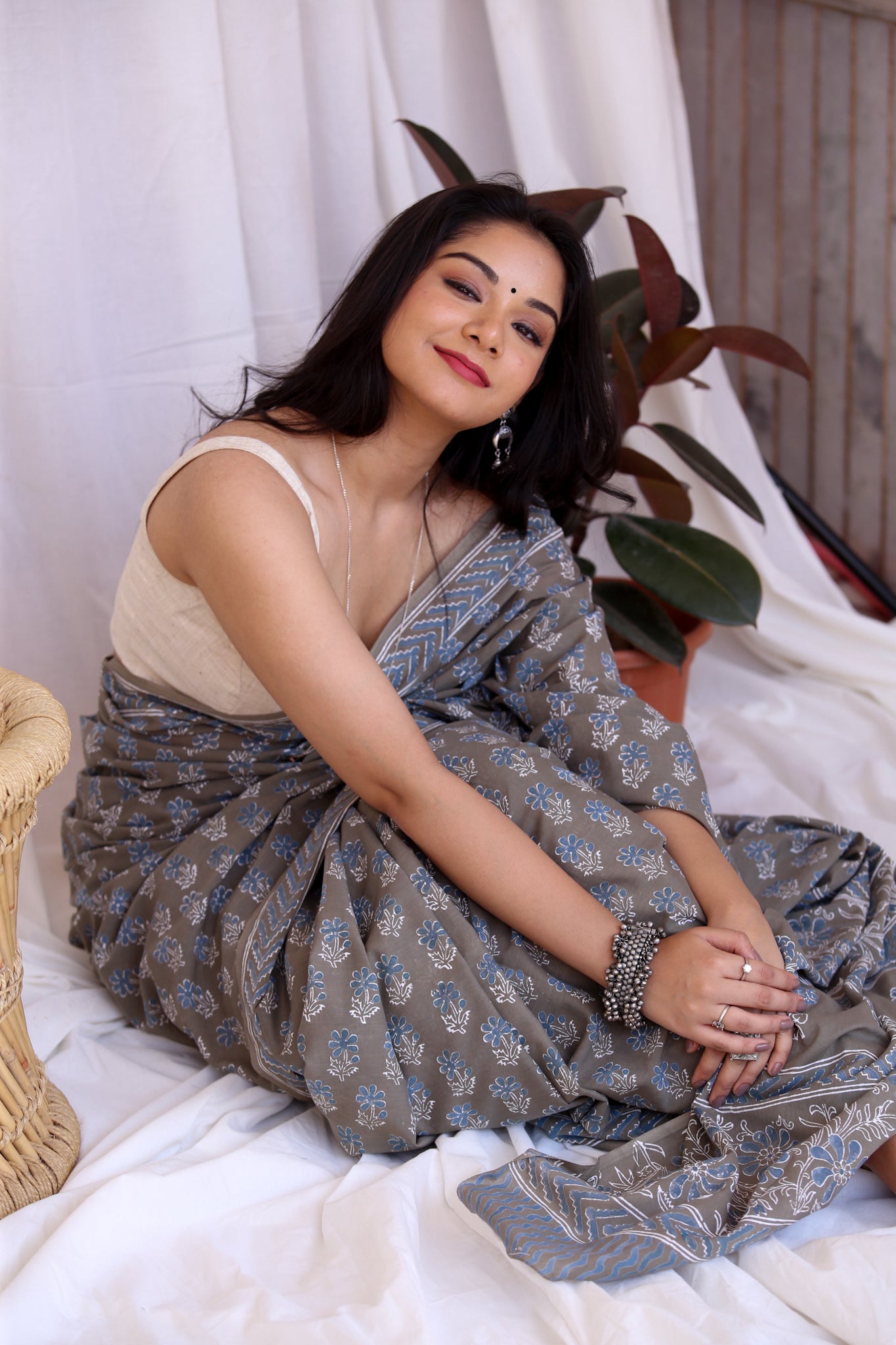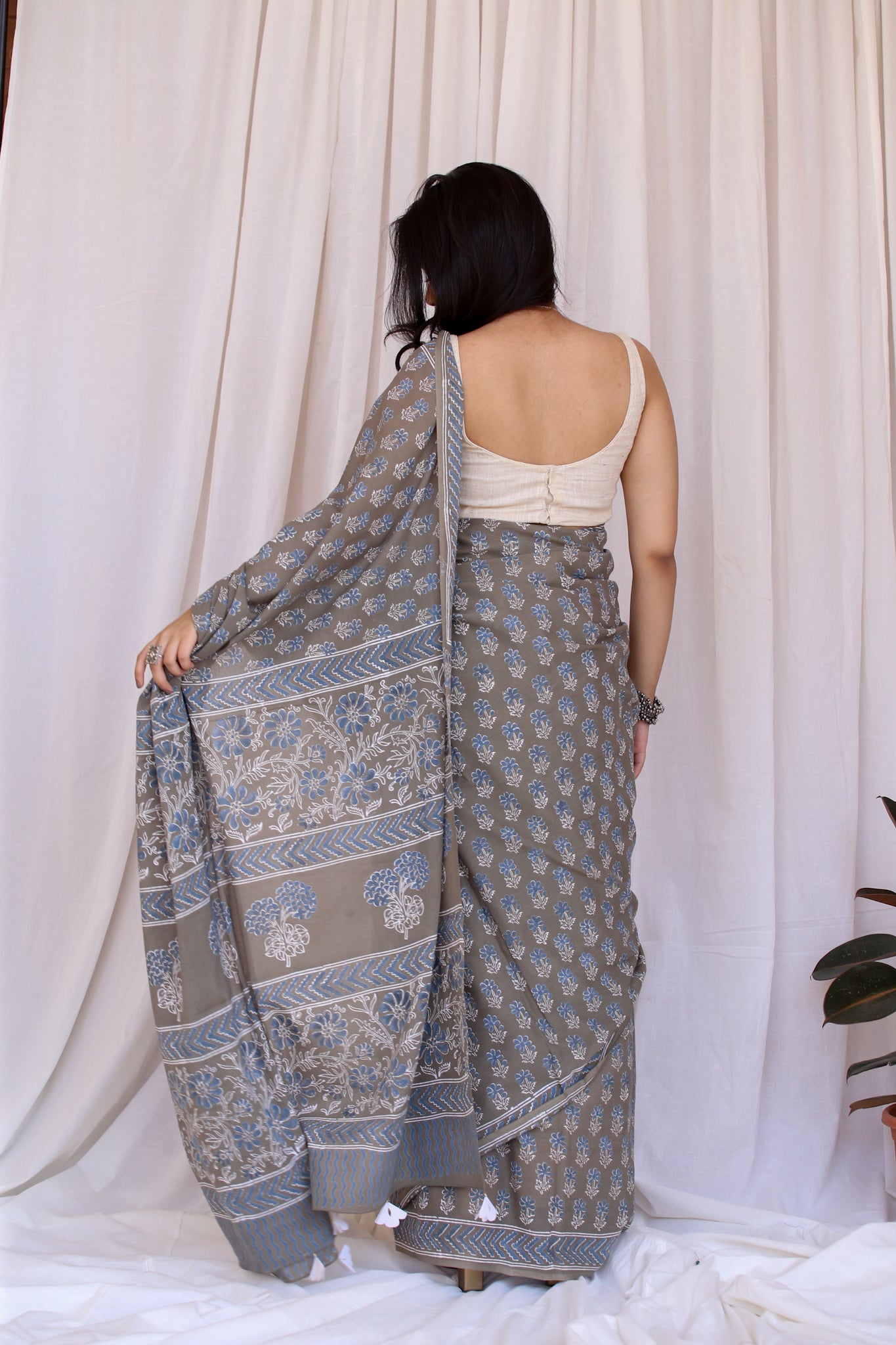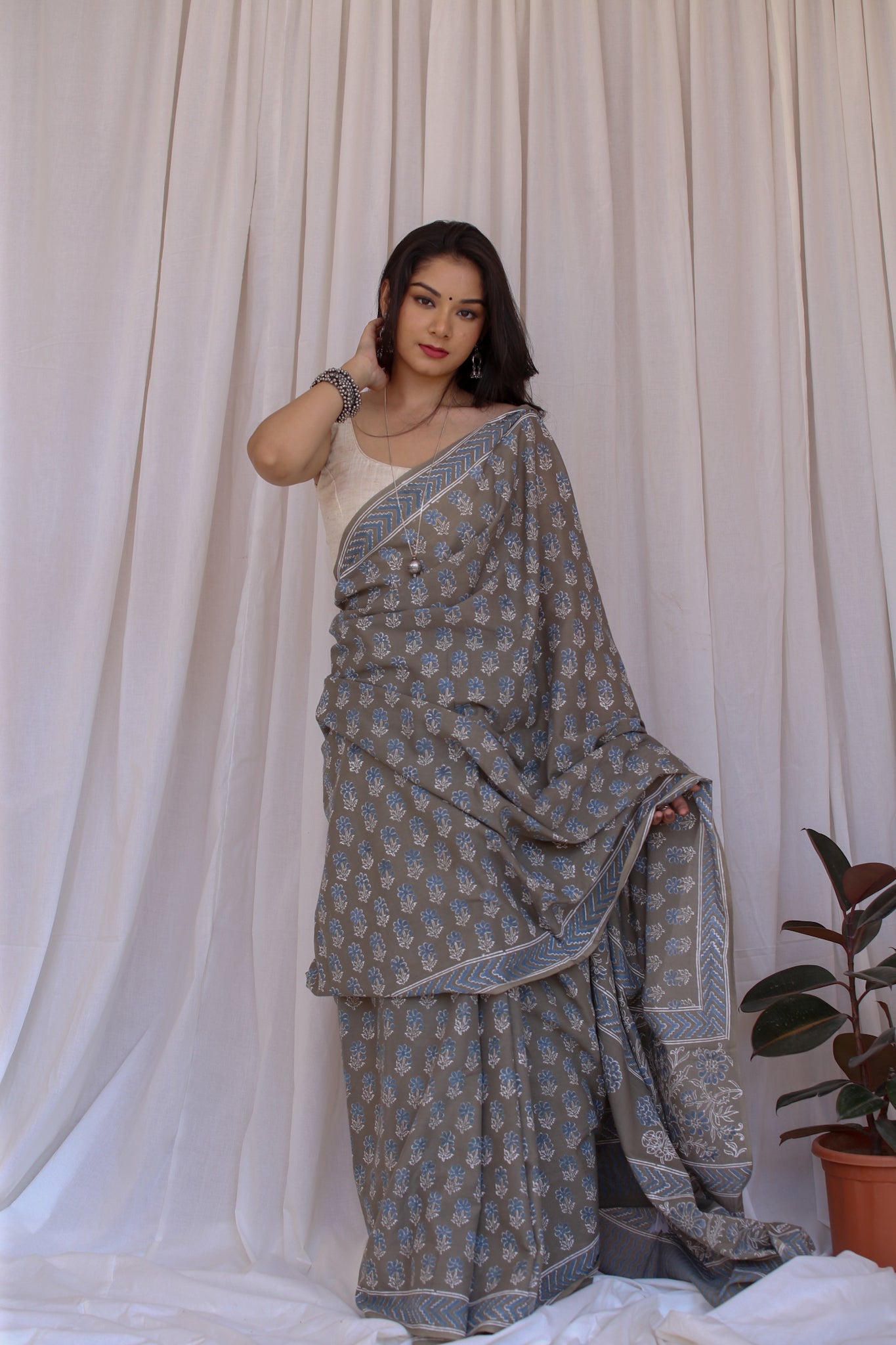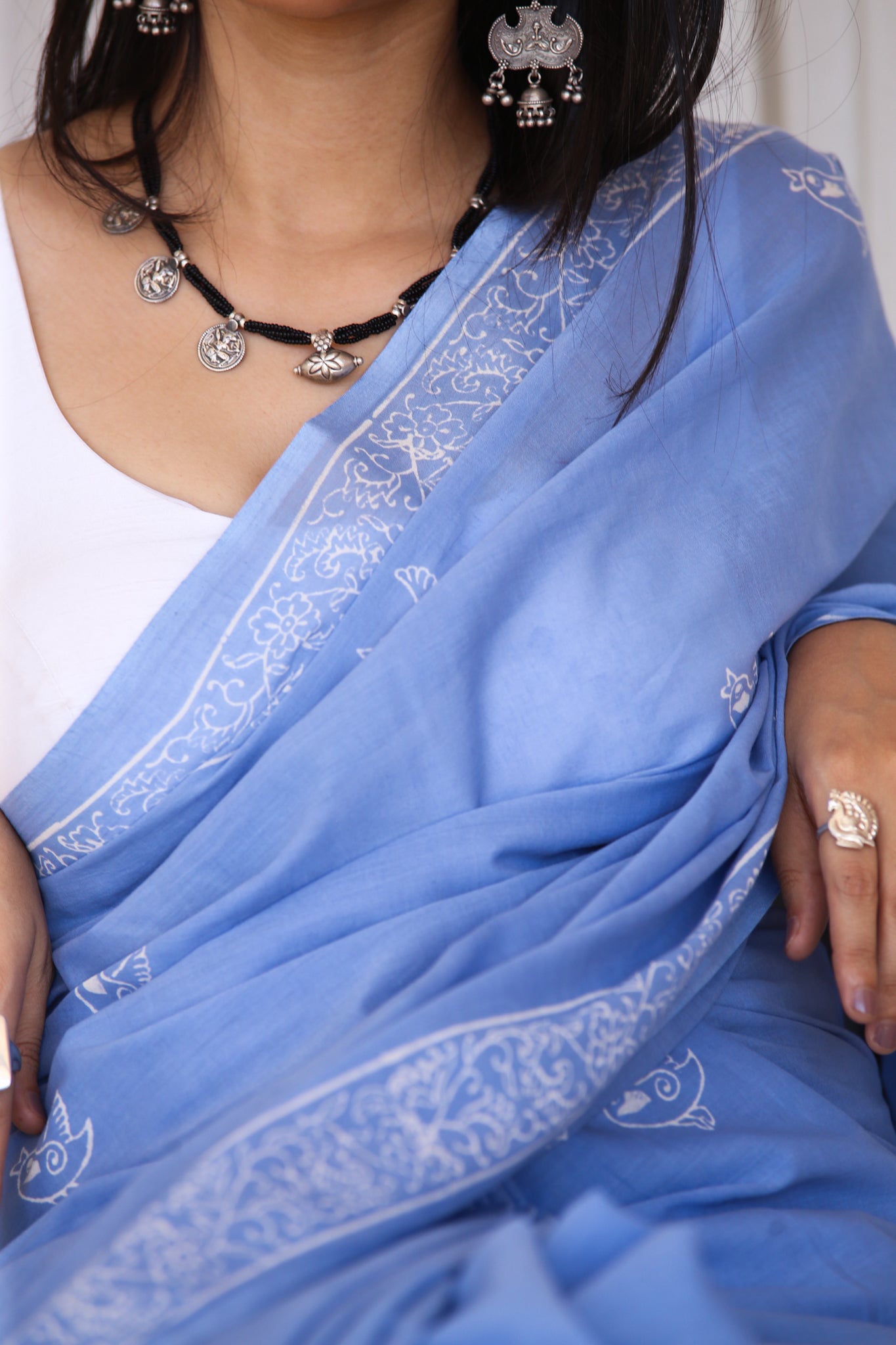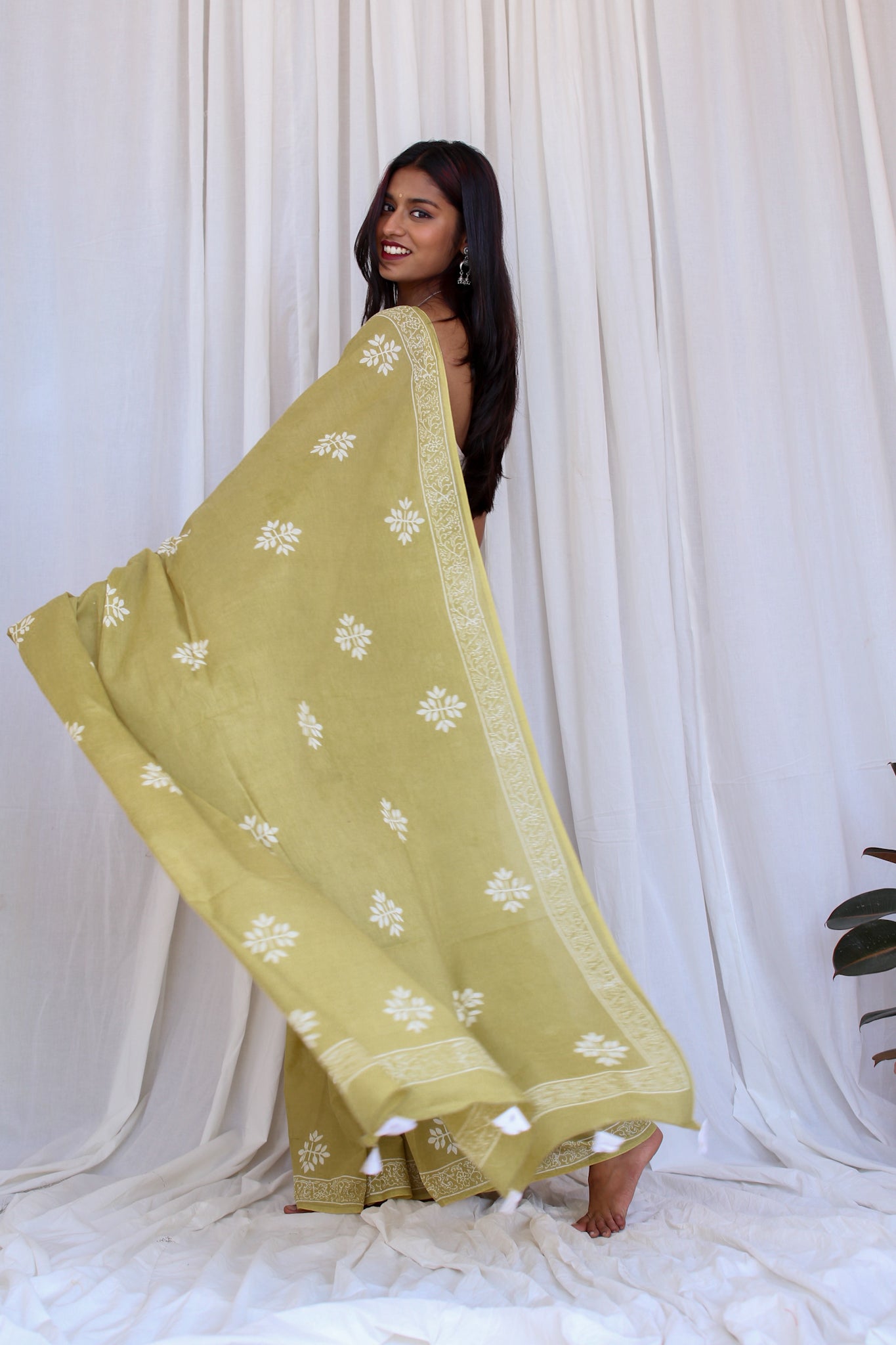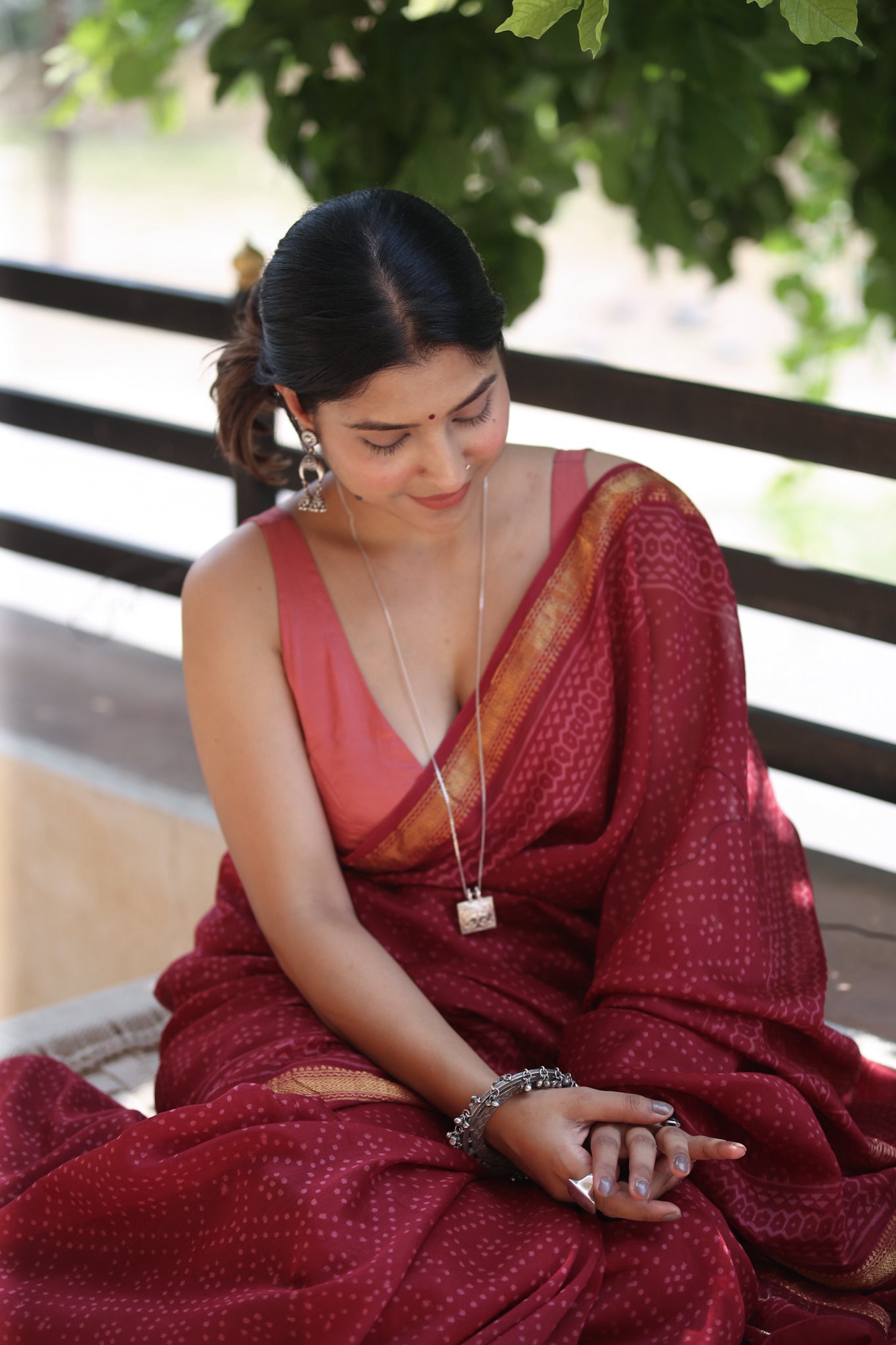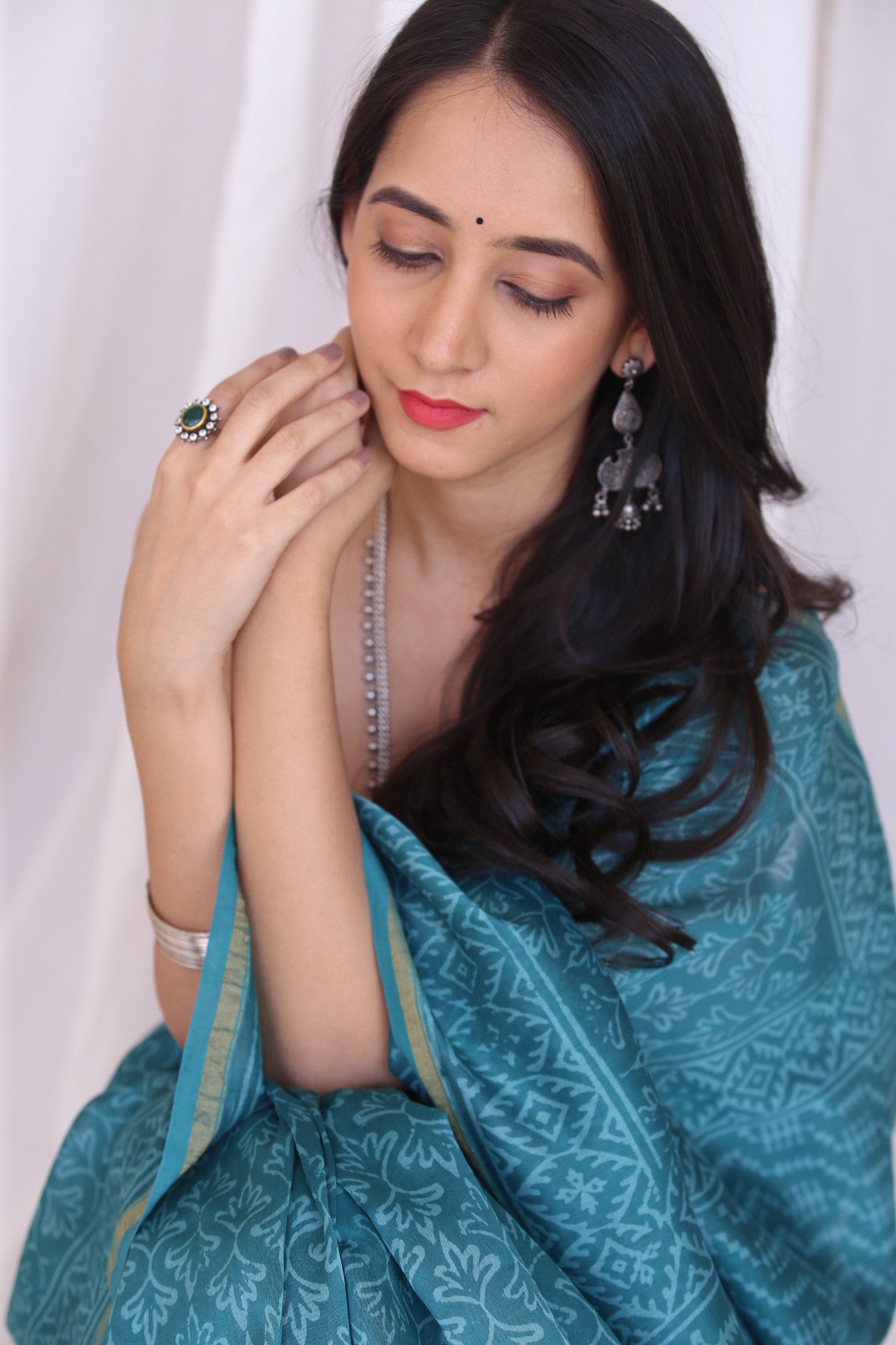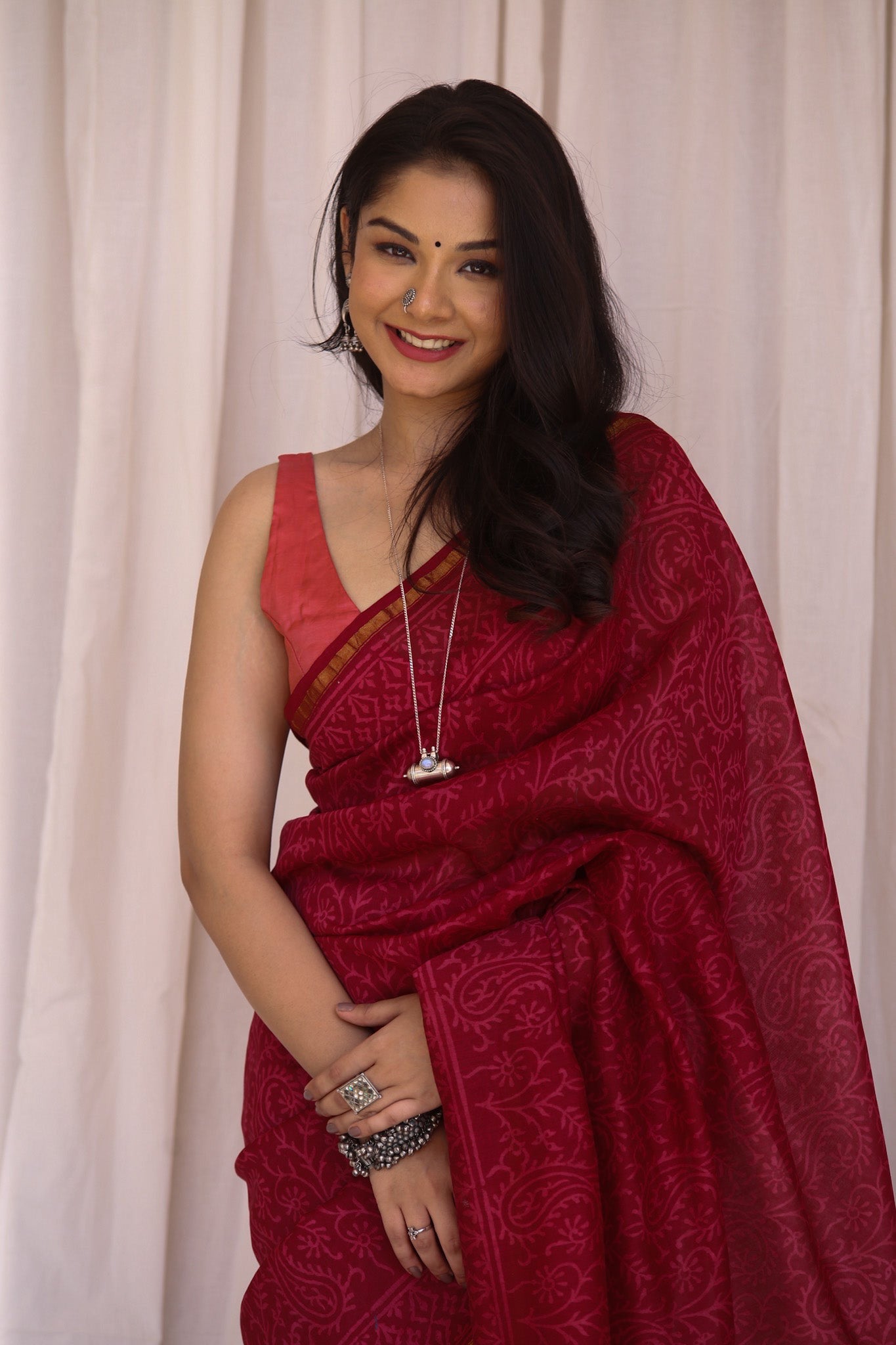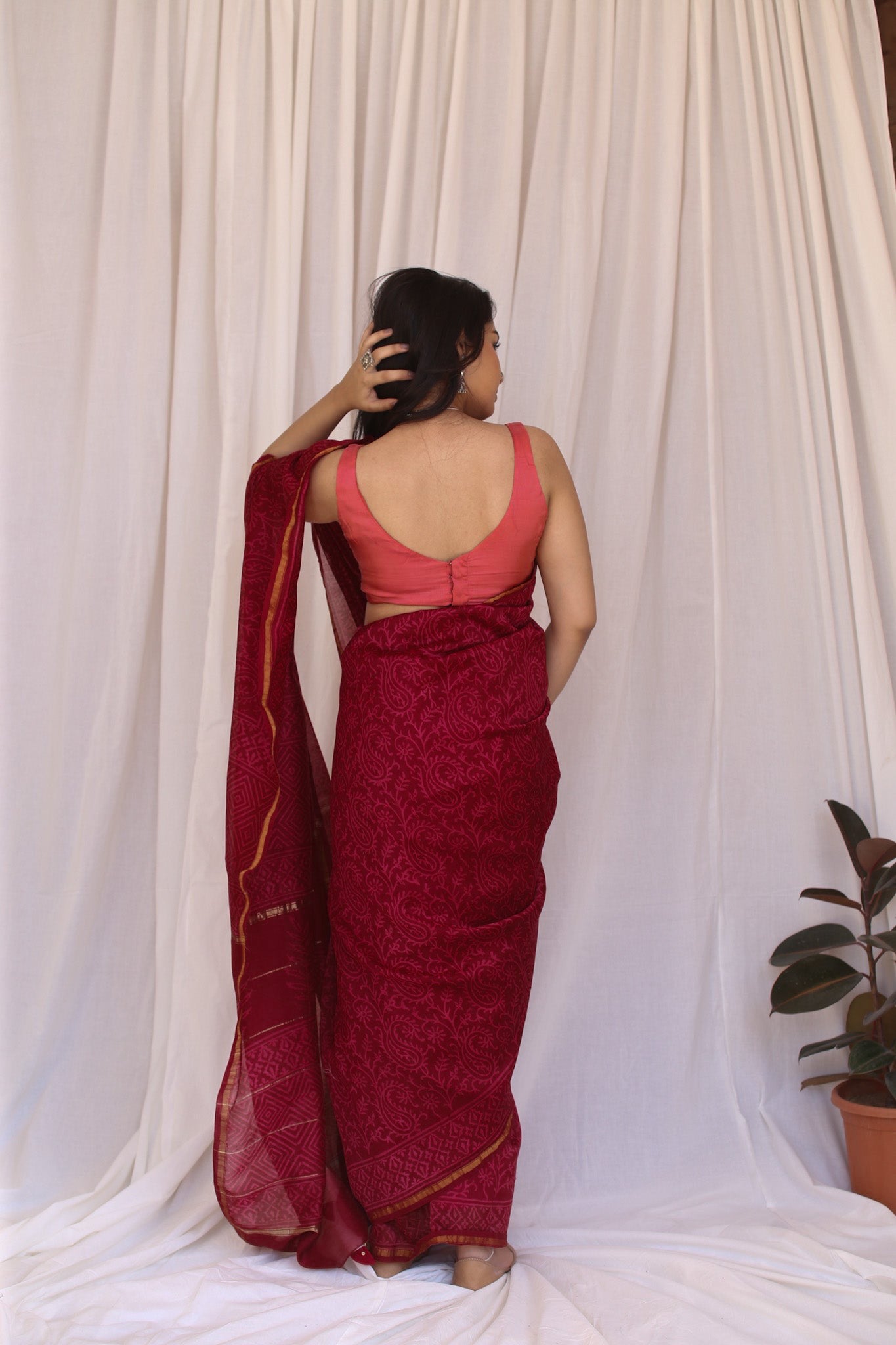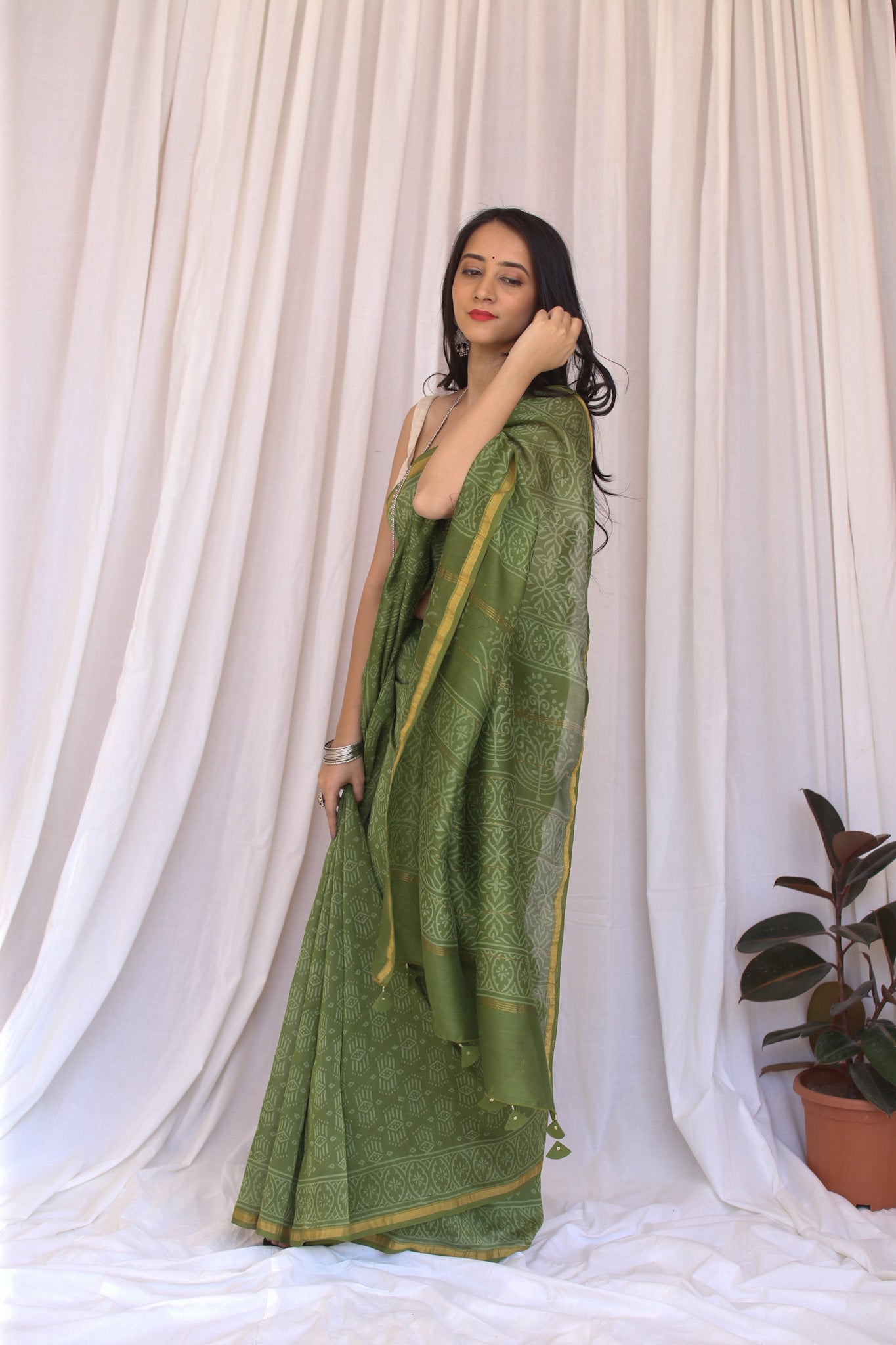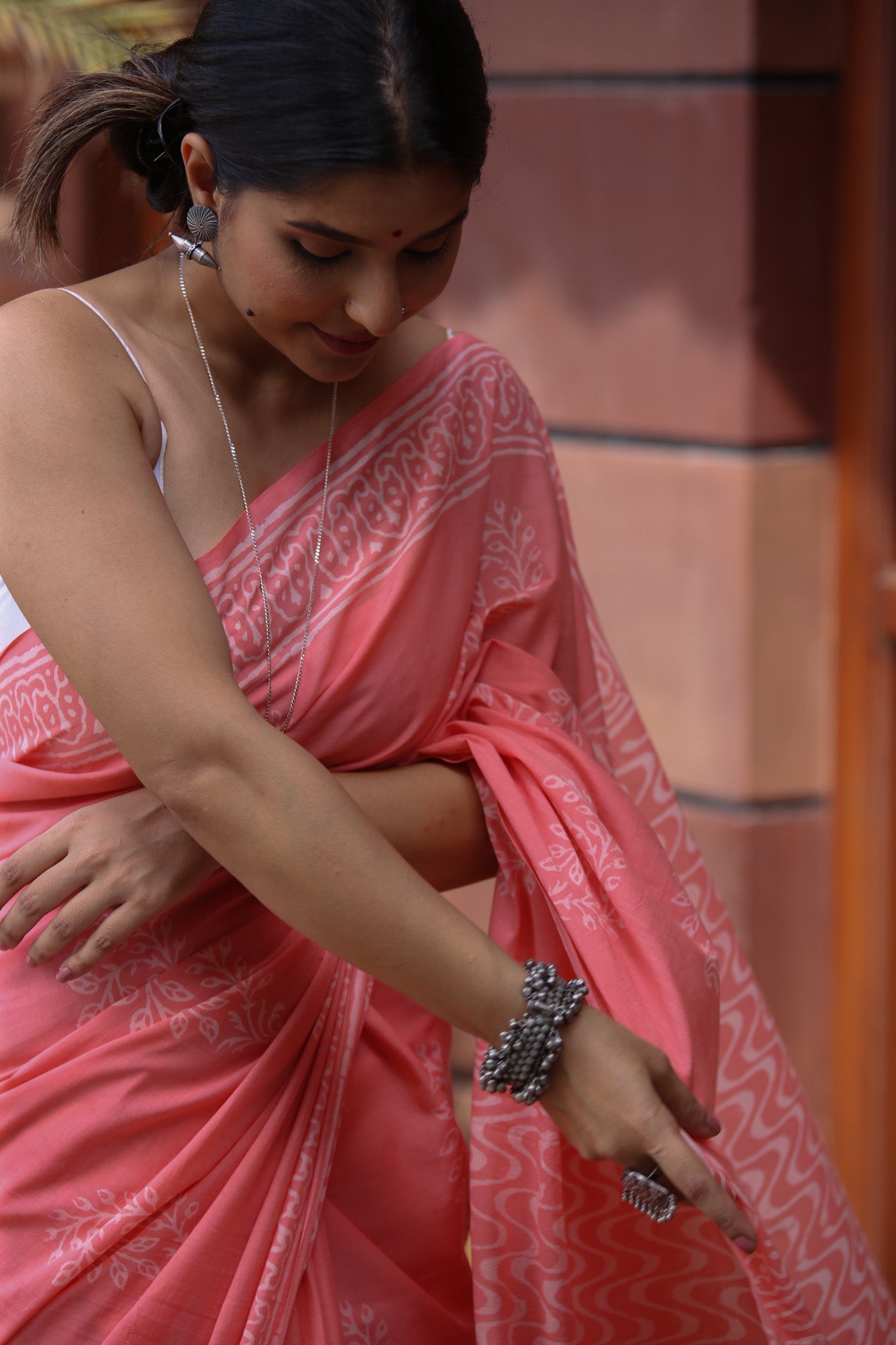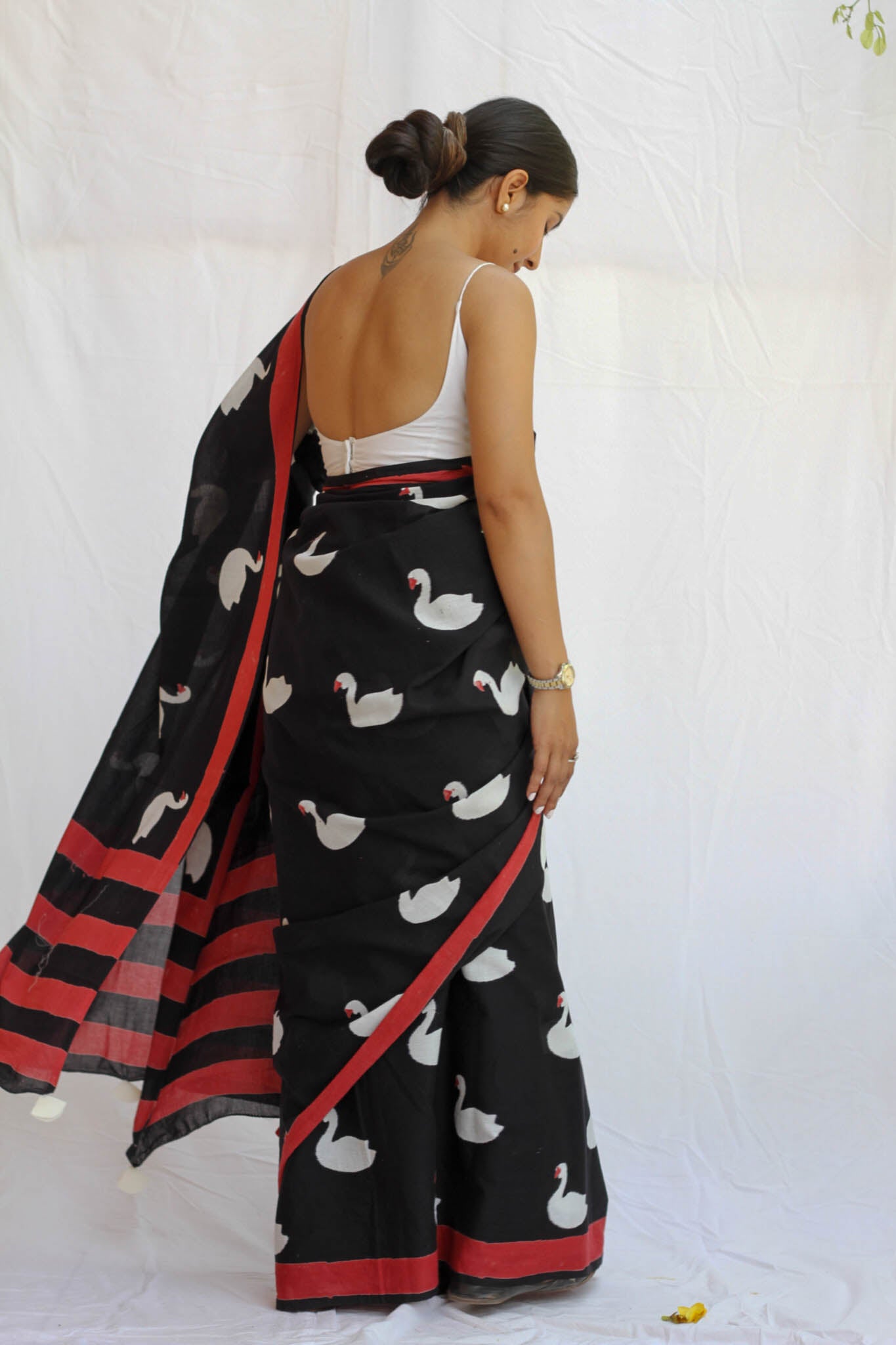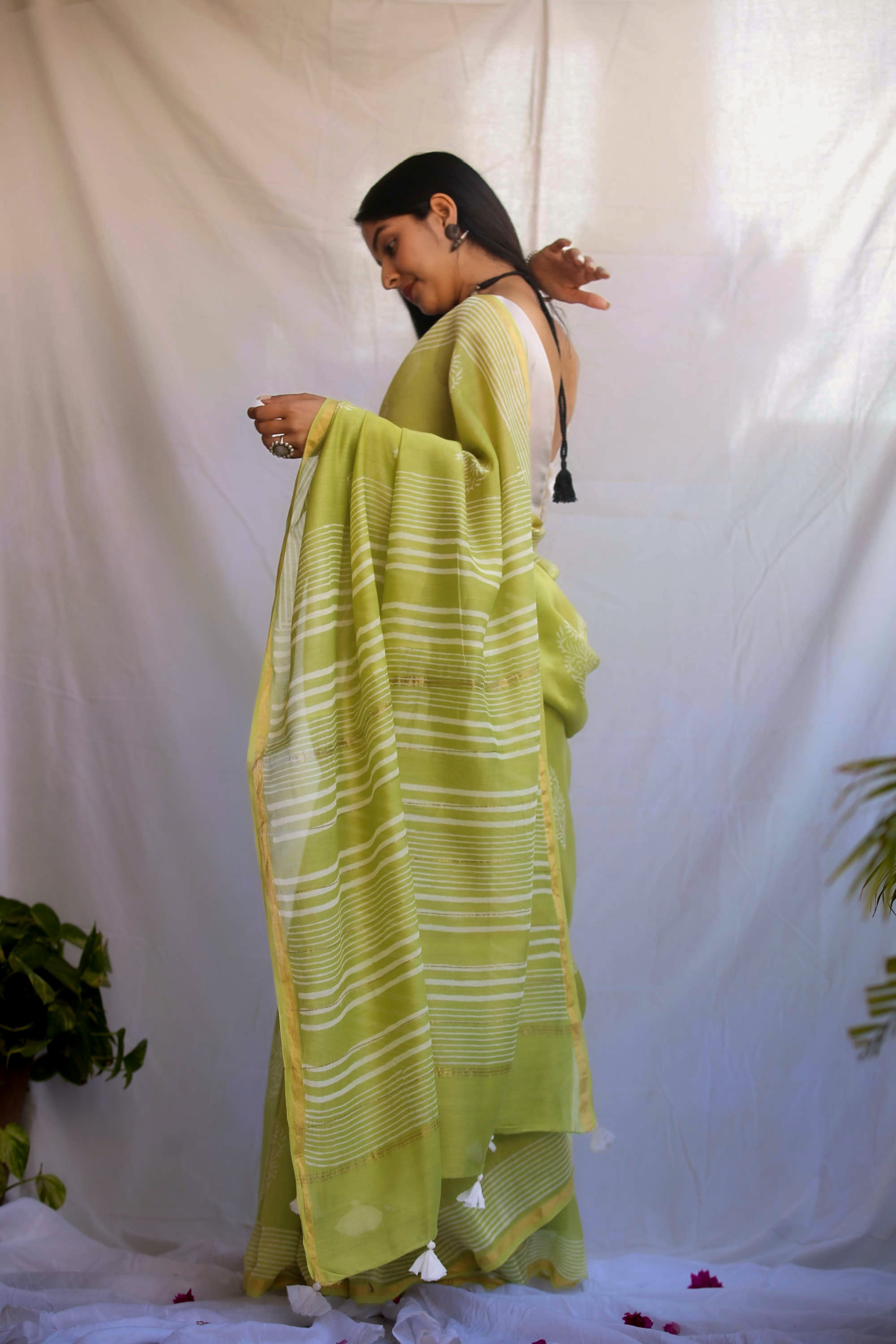Discharge Print
Discharge block printing is a distinctive textile printing technique celebrated for its ability to create intricate designs and vibrant patterns. This method involves using a chemical discharge process to remove dye from pre-dyed fabrics, revealing a contrasting pattern. Here’s a detailed description of how discharge block printing is done and what makes it unique:
How Discharge Block Printing is Done:
-
Fabric Preparation: The process begins with selecting a fabric that has been dyed in a solid color. Typically, this fabric is pre-washed to ensure it is free of impurities and ready for the discharge process.
-
Design Creation: Artisans prepare a design that will be applied to the fabric. The design can range from simple motifs to elaborate patterns, depending on the desired outcome.
-
Discharge Paste Preparation: A special discharge paste is prepared, usually containing a chemical agent such as sodium hydrosulfite. This paste is designed to remove the dye from specific areas of the fabric, creating a contrasting pattern.
-
Block Carving: Wooden blocks, known as “discharge blocks,” are carved with the desired design. These blocks are used to apply the discharge paste to the fabric.
-
Applying the Discharge Paste: The carved blocks are dipped into the discharge paste and then stamped onto the fabric. The paste interacts with the pre-dyed fabric, removing the color from the areas covered by the paste. This process creates the design in a contrasting color, often revealing the original fabric’s base color or a new shade.
-
Fixing and Washing: After applying the discharge paste, the fabric is allowed to develop the design. It is then washed to remove any remaining paste and fix the newly revealed pattern. This step ensures the discharge print is set and that the fabric is clean.
-
Finishing: The fabric is dried and ironed, and may undergo additional treatments to enhance its texture and colorfastness.
What Makes Discharge Block Printing Unique:
-
Chemical Discharge Technique: Unlike traditional block printing methods that add color to the fabric, discharge block printing uses a chemical process to remove color. This technique creates a high-contrast effect, where the pattern appears in a lighter shade against a darker background.
-
Detailed Patterns: The use of carved blocks allows for the creation of intricate and detailed designs. The precision of block carving combined with the discharge paste results in sharp, clear patterns that stand out on the fabric.
-
Vibrant Contrast: The discharge process reveals vibrant, contrasting patterns by removing the original dye from specific areas. This contrast can create striking visual effects and enhance the overall aesthetic of the fabric.
-
Artisanal Craftsmanship: Each piece of discharge-printed fabric is crafted by hand, ensuring that each design is unique. The artisanal nature of the process adds a personal touch to every textile, making each piece a work of art.
-
Versatile Applications: Discharge block printing can be applied to a variety of fabrics and used for a range of textile products, including clothing, home décor, and accessories. Its versatility makes it a popular choice for creating distinctive and customized designs.
Discharge block printing is a celebrated technique in textile arts, offering a unique approach to pattern creation through the removal of dye. Its ability to produce detailed, high-contrast designs while preserving the artisanal nature of block printing makes it a valuable and creative method in fabric design.



